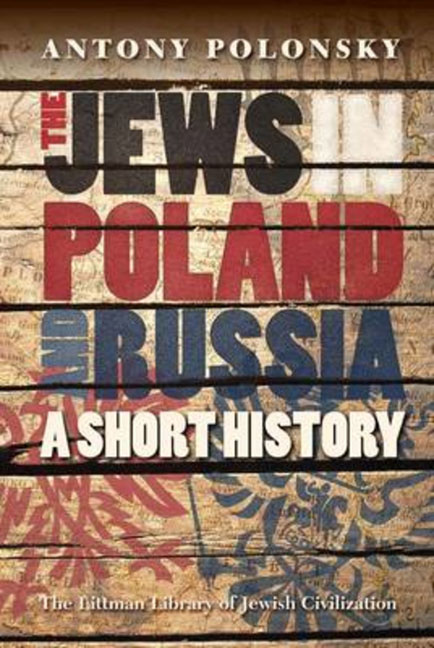Book contents
- Frontmatter
- Dedication
- Preface
- Acknowledgements
- Contents
- List of Maps
- Note on Transliteration
- Note on Place Names
- Maps
- Introduction
- 1 The Polish–Lithuanian Background
- 2 Attempts to Transform and Integrate the Jews, 1750–1881
- 3 The New Jewish Politics, 1881–1914
- 4 Social and Religious Change, 1750–1914
- 5 The First World War and its Aftermath
- 6 The Jews in Poland between the Two World Wars
- 7 Jews in Lithuania between the Two World Wars
- 8 Jews in Soviet Russia and the Soviet Union, 1921–1941
- 9 War and Genocide, 1939–1945
- 10 From the End of the Second World War to the Collapse of the Communist System
- 11 Jews in Eastern Europe and Russia since the End of Communism
- Conclusion
- Postword
- Glossary
- Notes
- Bibliography
- Index
Introduction
- Frontmatter
- Dedication
- Preface
- Acknowledgements
- Contents
- List of Maps
- Note on Transliteration
- Note on Place Names
- Maps
- Introduction
- 1 The Polish–Lithuanian Background
- 2 Attempts to Transform and Integrate the Jews, 1750–1881
- 3 The New Jewish Politics, 1881–1914
- 4 Social and Religious Change, 1750–1914
- 5 The First World War and its Aftermath
- 6 The Jews in Poland between the Two World Wars
- 7 Jews in Lithuania between the Two World Wars
- 8 Jews in Soviet Russia and the Soviet Union, 1921–1941
- 9 War and Genocide, 1939–1945
- 10 From the End of the Second World War to the Collapse of the Communist System
- 11 Jews in Eastern Europe and Russia since the End of Communism
- Conclusion
- Postword
- Glossary
- Notes
- Bibliography
- Index
Summary
THIS BOOK describes the establishment, flourishing, near-destruction, and slow rebirth of one of the most important communities in Jewish history. Since the Babylonian exile and the beginnings of the diaspora, Jewish life has been characterized by the rise of major centres of creativity and dynamism. In the period of the Second Temple (530 bce–70 ce) and after, Mesopotamia with its exilarch and its great academies was an even more important focus of Jewish intellectual and legal activity than Erets Yisra’el. It remained so under Islamic rule, to be supplanted in the early Middle Ages by the communities of Spain and the Rhineland. When these settlements lost their significance, with the persecutions of the Crusades and more particularly the Black Death in Germany, and with the expulsion and forced conversion of the Jews in Spain, their place was taken by the Polish–Lithuanian Commonwealth and the Turkish empire, along with smaller communities in Italy, the German lands, and the Atlantic littoral. By the early seventeenth century the Jewish community of Poland–Lithuania had become the largest in the Jewish world.
The Jewish population of Poland–Lithuania grew from between 10,000 and 30,000 at the end of the fifteenth century (out of a total population of about 4 million) to between 150,000 and 300,000 (out of 10 million) by 1650, and to 750,000 (out of 14million) by 1764. During the years of its flourishing it gave rise to a unique religious and secular culture in Hebrew and Yiddish and enjoyed an unprecedented degree of self-government. In a penitential prayer composed in the aftermath of the massacres that occurred during the Cossack uprising of the mid-seventeenth century, Rabbi Yom Tov Lipmann Heller looked back to a golden age, recalling ‘Poland, a country of royalty where we have dwelt from of old in tranquil serenity’. Yet even after the devastation of these upheavals, which also marked the beginning of the downfall of the Polish–Lithuanian Commonwealth, the Jewish community continued to grow and even to recover some of its vitality. In the late eighteenth century these lands saw the birth and development of hasidism, an innovative revivalist movement, which was eventually to win the allegiance of a large proportion of the Jewish population and which remains very much alive in the Jewish world today.
- Type
- Chapter
- Information
- The Jews in Poland and Russia: A Short History , pp. 1 - 2Publisher: Liverpool University PressPrint publication year: 2013

